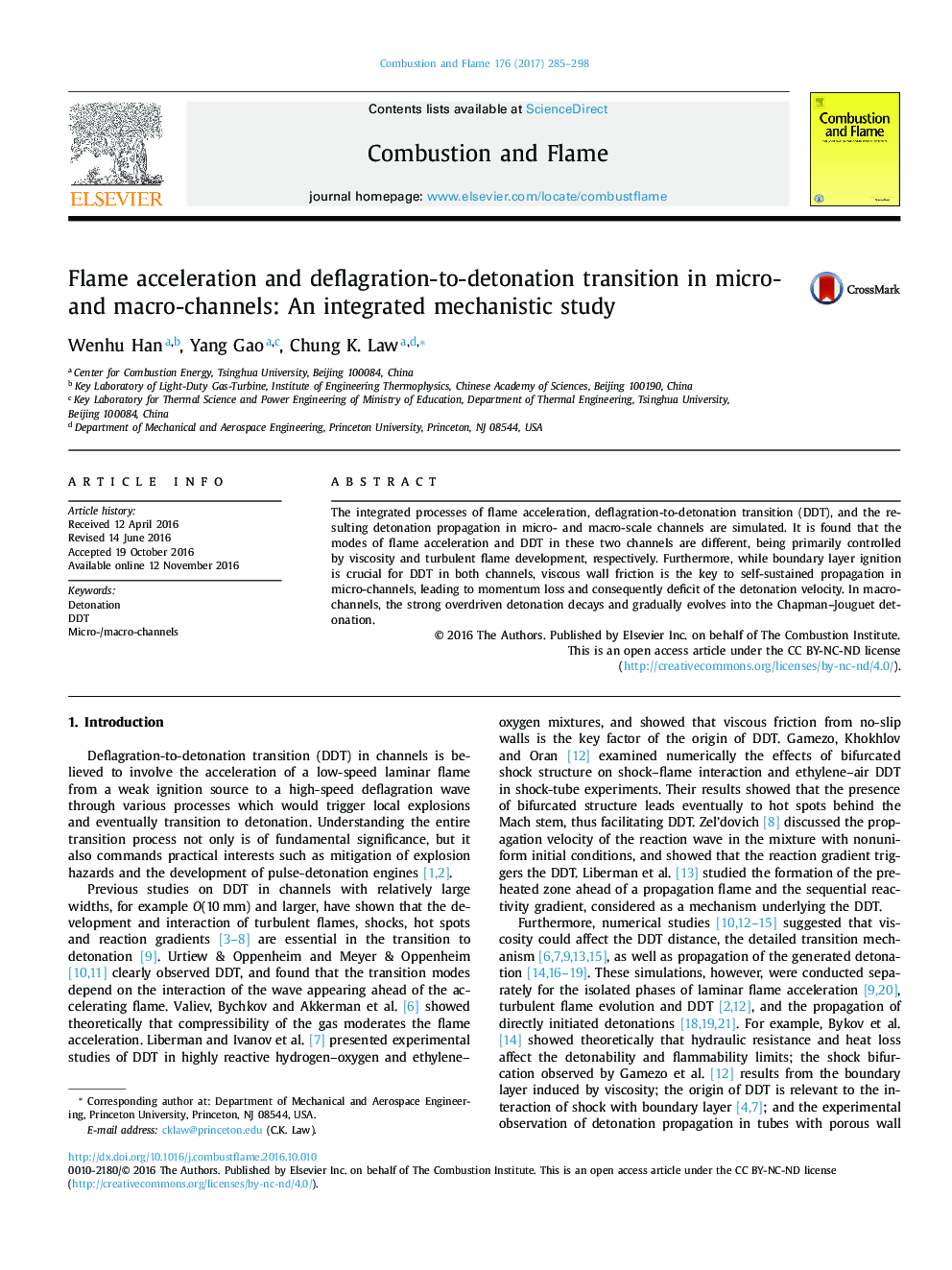| Article ID | Journal | Published Year | Pages | File Type |
|---|---|---|---|---|
| 6468455 | Combustion and Flame | 2017 | 14 Pages |
Abstract
The integrated processes of flame acceleration, deflagration-to-detonation transition (DDT), and the resulting detonation propagation in micro- and macro-scale channels are simulated. It is found that the modes of flame acceleration and DDT in these two channels are different, being primarily controlled by viscosity and turbulent flame development, respectively. Furthermore, while boundary layer ignition is crucial for DDT in both channels, viscous wall friction is the key to self-sustained propagation in micro-channels, leading to momentum loss and consequently deficit of the detonation velocity. In macro-channels, the strong overdriven detonation decays and gradually evolves into the Chapman-Jouguet detonation.
Keywords
Related Topics
Physical Sciences and Engineering
Chemical Engineering
Chemical Engineering (General)
Authors
Han Wenhu, Gao Yang, Law Chung K.,
